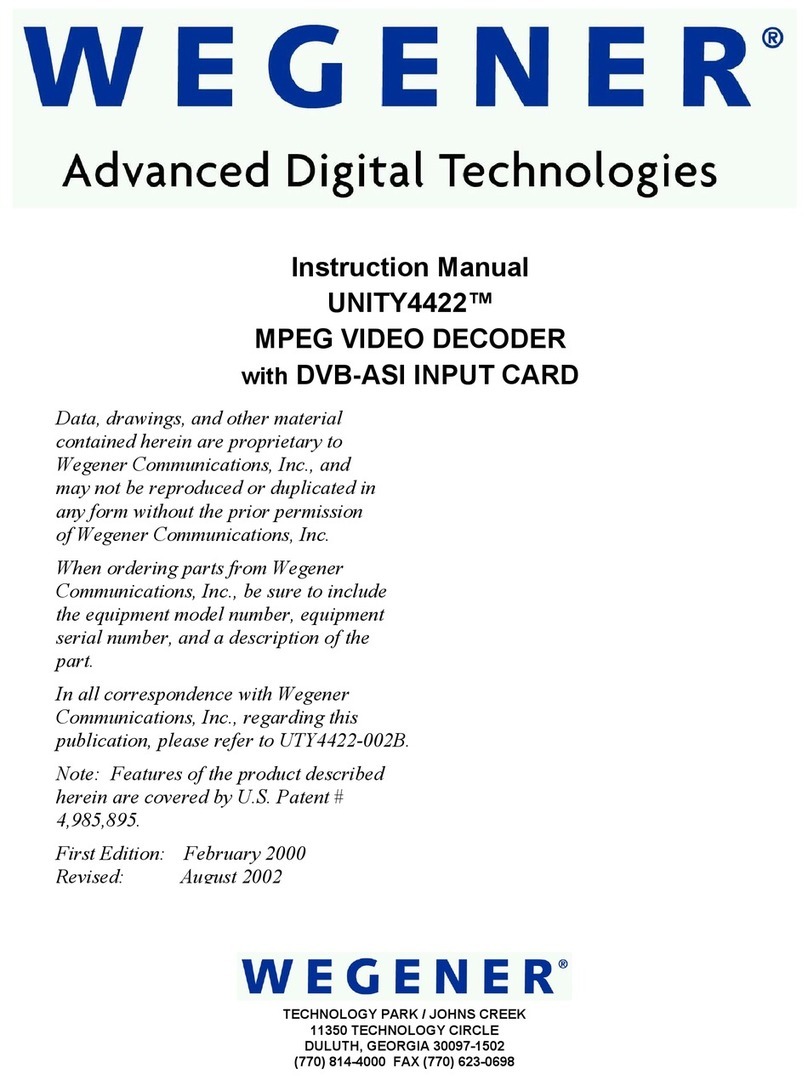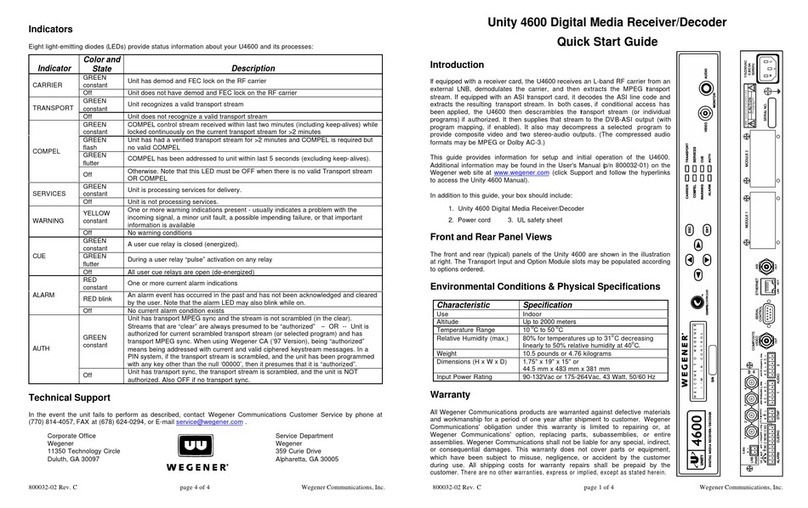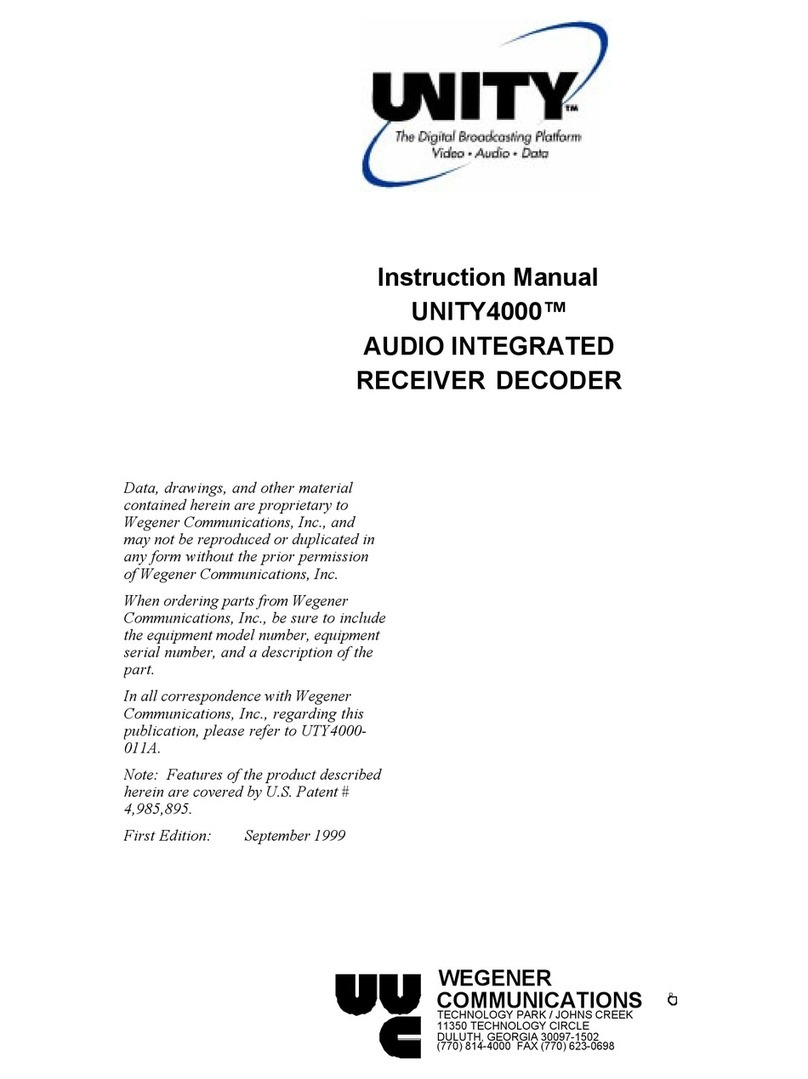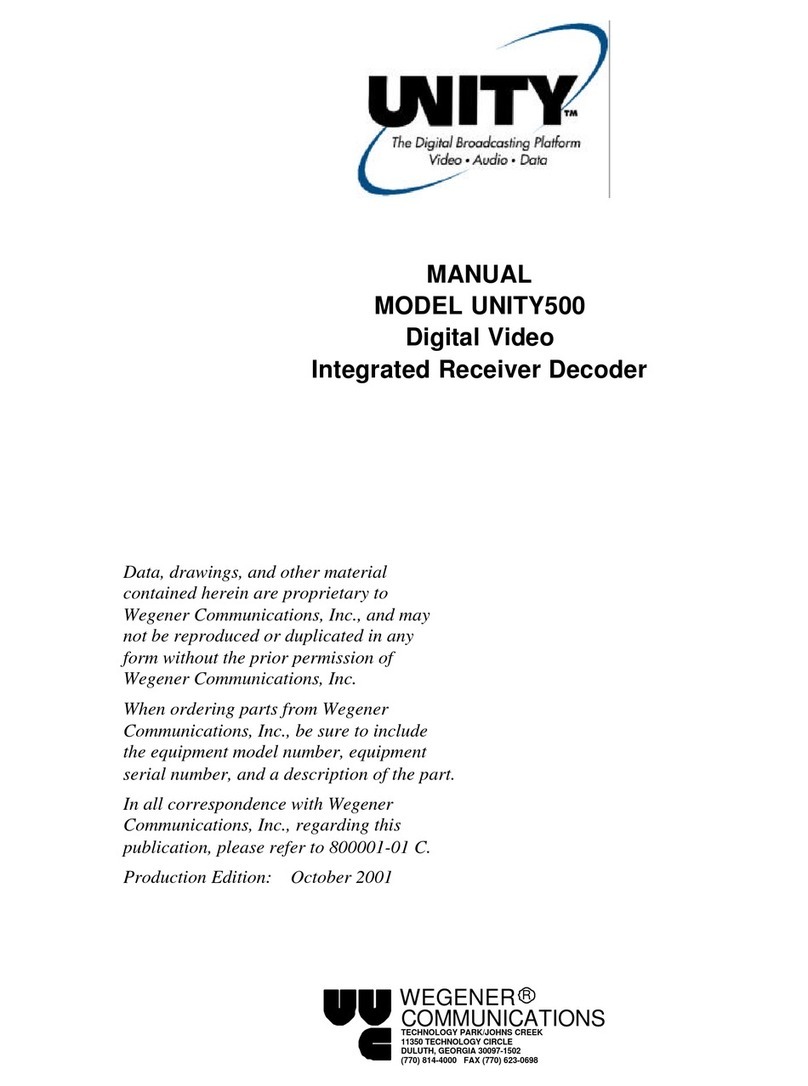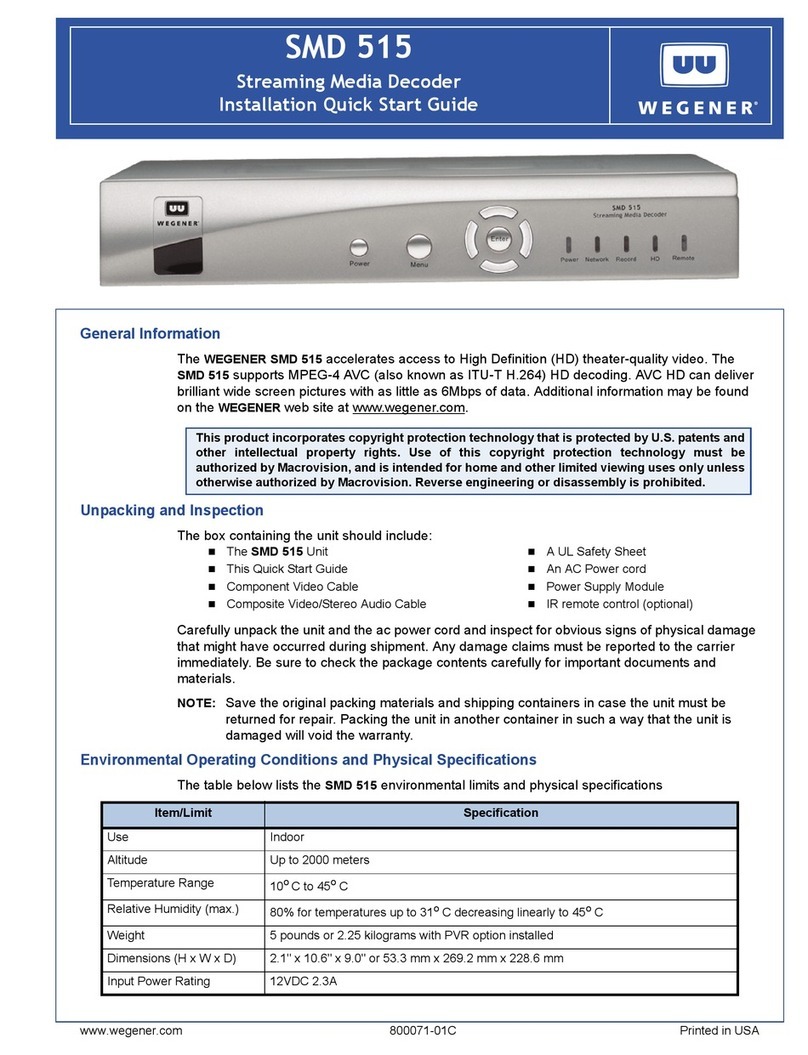
Unity 4600 User’s Manual
wegener.com 5 800032-01 Rev. C
Table of Contents
Chapter 1 General Information
1.1 Manual Overview . . . . . . . . . . . . . . . . . . . . . . . . . . . . . . . . . . . . . . . . 7
1.2 U4600 Overview . . . . . . . . . . . . . . . . . . . . . . . . . . . . . . . . . . . . . . . . . 8
Functional Description . . . . . . . . . . . . . . . . . . . . . . . . . . . . . . . . . . . . 8
Physical Description . . . . . . . . . . . . . . . . . . . . . . . . . . . . . . . . . . . . . . 8
Figure 1.1 The Unity 4600 Digital Media Receiver/Decoder . . 8
1.3 U4600 Specifications. . . . . . . . . . . . . . . . . . . . . . . . . . . . . . . . . . . . . . 9
Table 1 Technical Specifications . . . . . . . . . . . . . . . . . . . . . . . . . 9
Table 2 Transport In Options . . . . . . . . . . . . . . . . . . . . . . . . . . 13
1.4 Safety Summary. . . . . . . . . . . . . . . . . . . . . . . . . . . . . . . . . . . . . . . . . 18
1.5 Glossary of Terms and Abbreviations . . . . . . . . . . . . . . . . . . . . . . . . 18
Table 3 Glossary of Terms. . . . . . . . . . . . . . . . . . . . . . . . . . . . . 18
Chapter 2 Installation
2.1 Unpacking and Inspection . . . . . . . . . . . . . . . . . . . . . . . . . . . . . . . . . 23
2.2 Location and Mounting . . . . . . . . . . . . . . . . . . . . . . . . . . . . . . . . . . . 23
FCC-mandated suppression of radiated emissions . . . . . . . . . . . . . . 23
Rack Mounting . . . . . . . . . . . . . . . . . . . . . . . . . . . . . . . . . . . . . . . . . 25
Desktop Installation. . . . . . . . . . . . . . . . . . . . . . . . . . . . . . . . . . . . . . 25
2.3 U4600 Connections . . . . . . . . . . . . . . . . . . . . . . . . . . . . . . . . . . . . . . 26
Figure 2.1 U4600 Rear-panel Connector Locations . . . . . . . . 26
Figure 2.2 U4600 Transport In Options . . . . . . . . . . . . . . . . . . 27
Table 4 Rear-panel Connectors. . . . . . . . . . . . . . . . . . . . . . . . . 28
Table 5 Front-panel Connectors . . . . . . . . . . . . . . . . . . . . . . . . 30
2.4 Serial Port Configuration. . . . . . . . . . . . . . . . . . . . . . . . . . . . . . . . . . 31
Device assignments . . . . . . . . . . . . . . . . . . . . . . . . . . . . . . . . . . . . . . 31
Device configurations . . . . . . . . . . . . . . . . . . . . . . . . . . . . . . . . . . . . 31
Table 6 Device Configurations. . . . . . . . . . . . . . . . . . . . . . . . . . 31
Device handling. . . . . . . . . . . . . . . . . . . . . . . . . . . . . . . . . . . . . . . . . 32
2.5 Installation Testing . . . . . . . . . . . . . . . . . . . . . . . . . . . . . . . . . . . . . . 33
RF input check. . . . . . . . . . . . . . . . . . . . . . . . . . . . . . . . . . . . . . . . . . 33
Audio/video check. . . . . . . . . . . . . . . . . . . . . . . . . . . . . . . . . . . . . . . 33
DTMF Setup . . . . . . . . . . . . . . . . . . . . . . . . . . . . . . . . . . . . . . . . . . . 34
Relay Pulse Check. . . . . . . . . . . . . . . . . . . . . . . . . . . . . . . . . . . . . . . 34
Chapter 3 Operation
3.1 Theory of Operation. . . . . . . . . . . . . . . . . . . . . . . . . . . . . . . . . . . . . . 35
Functional summary . . . . . . . . . . . . . . . . . . . . . . . . . . . . . . . . . . . . . 35
Automated recovery . . . . . . . . . . . . . . . . . . . . . . . . . . . . . . . . . . . . . 35
Monitoring and control . . . . . . . . . . . . . . . . . . . . . . . . . . . . . . . . . . . 36
Figure 3.1 Unity 4600 Functional Block Diagram. . . . . . . . . . 37












